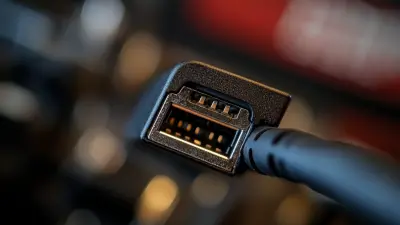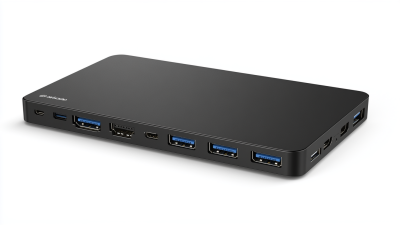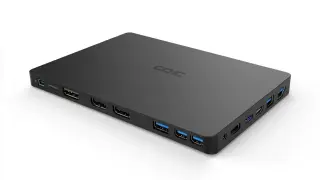
-
Home
-
Products
-
About Us
-
OEM&ODM
-
News
-
Blog
-
Contact Us
Inquiry
Form loading...

Connectivity, with all its efficiency and versatility, is quickly growing in importance in this well-connected day and age. The growth expected to happen in USB hub technology as we near the year 2025 is rather monumental. One of its centers of innovation will surely be the technology of networking integrating Hub USB to LAN, which will reshape our interaction with multiple devices and network accessibility. This evolution of USB technology will surely meet consumers' and businesses' wishes for better seamless-connectivity and productive environment.
With over fifteen years of experience in this industry, Zhongshan Sinseader Electronic Co., Ltd. was established in 2007 and is committed to the development and manufacture of USB hubs, docking stations, and a full selection of computer peripherals. As an industry leader, Sinseader is working to enhance connectivity solutions that will meet the needs of users in a world where devices are becoming more and more interconnected. The commitment of Sinseader to research and innovation is certain to put it in good stead as it takes up an active role in the advancement of USB hub technology in 2025 and beyond.

USB hub technology has gone through quite an odyssey, which can only be described as one of the most significant development paths. From the early USB 1.0 days with a mere 1.5 Mbps transfer speed to modern-day USB4 being able to transfer data at a whopping 40 Gbps, we have seen a paradigm shift. According to industry reports, the global USB hubs market is now projected to reflect an annual growth rate of around 6.5% and reach a value of about USD 2.3 billion by the year 2025. The major force driving this growth will include an increasing number of devices in need of connectivity, be they laptops, tablets, or an ever-growing range of peripherals. A much more significant trend in USB hub technology is USB-C connector adoption, featuring reversible designs and fast charging. Reports say that by 2025, USB-C compatibility will dominate over 70% of the USB hub market, with manufacturers considering standardized connectors that can support a wider array of devices. Along with these, features like power delivery (PD) and data transfer through the same cable have been on the back burner, but they are extremely important to create a more seamless interactive experience. We have also started seeing dedicated USB hubs for various applications, such as gaming and professional audio-video signal processing. The predictions say that gaming, with a very high CAGR of 10%, will be buoyed by the increasing popularity of gaming laptops and consoles. With the growth of technology, USB hubs have changed their functionality as well: rather than just used for plain connectivity, their capabilities are being extended for enhancing the performance of attached devices, which is an important shift in purpose and design.

As technological advancements like USB4 or Thunderbolt 5 usher in changes to USB formats and hubs, the fast-approaching 2025 will witness tremendous transformations in USB hubs technology. As soon as that integration takes place, the enhanced performance and technologies make these USB hubs all the more necessary in consumer and professional life.
Among the major USB hub characteristics expected in the near future is USB4 support, which allows a single Type-C connector to provide high-speed data transfer, high-definition video output, and charging capabilities. Thus integration saves lots of connectivity hassles and gathers multiple interfaces into a single efficient solution.
Also, another important consideration is the performance improvement inherent in the latest standard. With the increase in transfer rates expected, users will enjoy a seamless experience in multitasking, data backup, and dependable power delivery. Networking with respect to the active cables and advanced thermal management will also foster the emergence of devices capable of higher data flows without compromising on safety or efficiency. As manufacturers innovate and fine-tune their designs, we expect a brand new generation of USB hubs that will not only meet but exceed the requirements of modern computing environments.
Sustainable technology solutions are also likely to affect the features of USB hub products in 2025. Environmentally aware customers are increasingly seeking products with a positive impact on sustainability goals, and thus manufacturers will likely start to produce USB hubs from eco-sensitive materials and energy-efficient designs in line with the broader trend in the industry toward responsible technology consumption. As we head into this new era of connectivity, these core fundamental features will hold immense significance when it comes to making the right choice in a USB hub for the needs of the future.
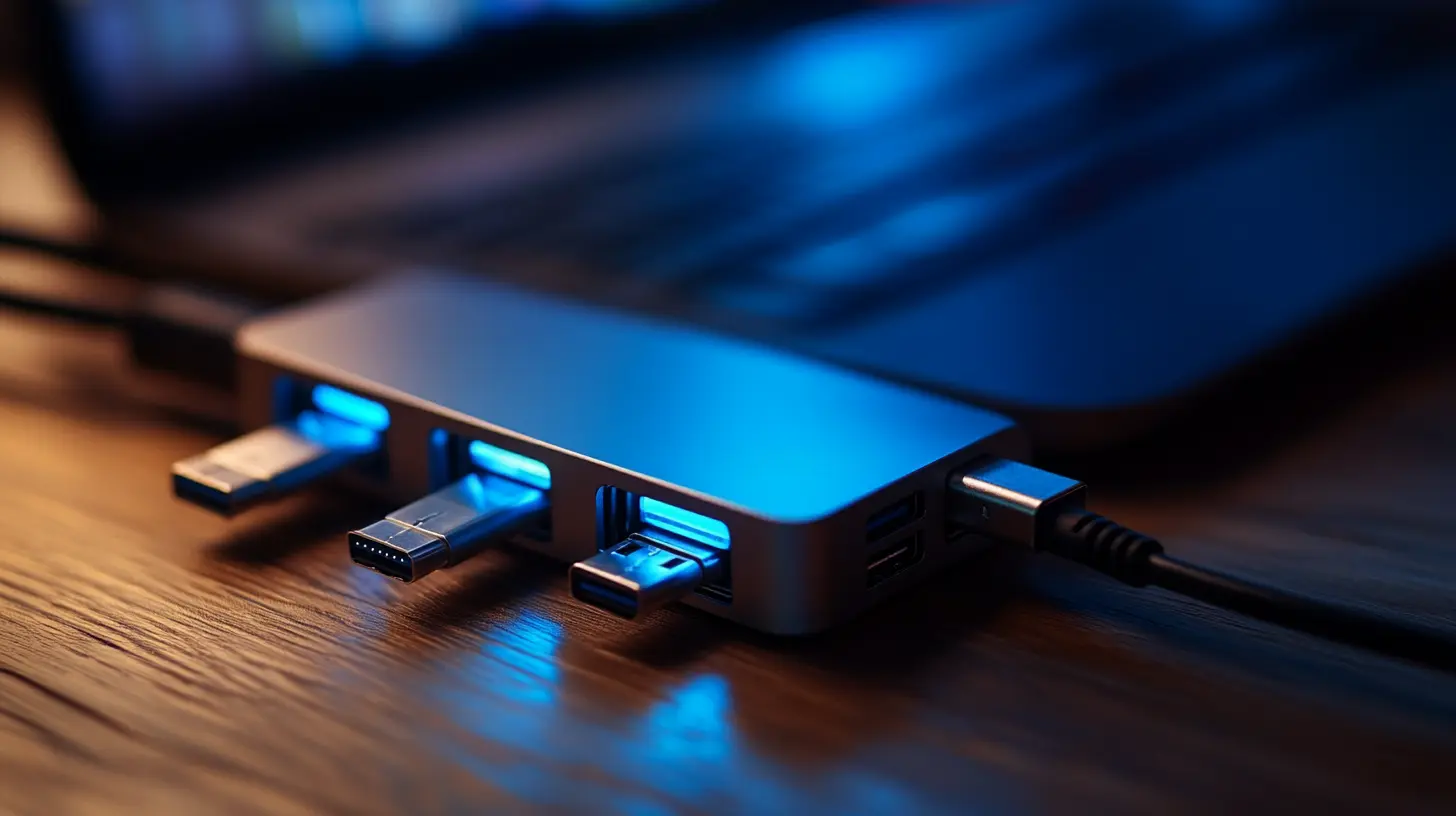
As we look towards the future, the evolution of USB technology will continue to reshape connectivity. The introduction of wireless USB hubs marks an important shift; eliminating clutter of cables, these provide seamless wireless data transfer. Notably, as industries move towards more portable computing solutions, the need for versatile hubs that can interface various peripherals—from storage devices through to monitors—is critical. A report from Tech Insights highlights that by 2025, over 75% of mobile devices will utilize USB hubs to enhance operational capabilities, supporting features from high-speed data to charging.
Given that progressions in USB 3.2 and other emergent standards will unleash the full potential of interconnectivity, USB hubs will become indispensable in our everyday tech environment. As observed by a review on one recent technology, the speed and efficiency of upcoming USB standards will make faster data paths in operation and meaningfully enhance professional workflows. Hubs that carry those advanced technologies will be used not only to settle plain connectivity needs, but also as an assurance of the convenience of navigating the increasingly interconnected technological landscape.
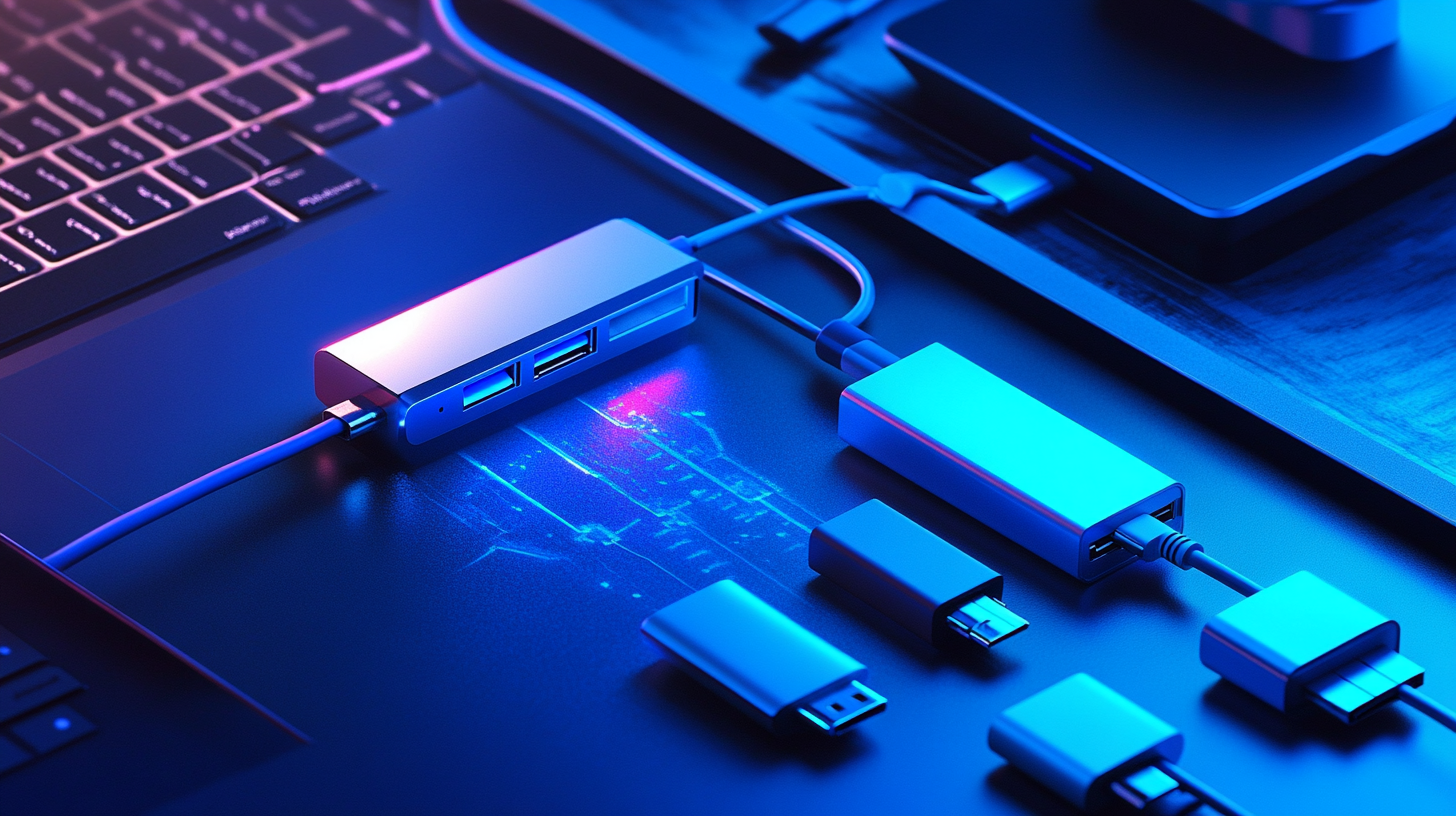
Heading towards 2025, it can be observed from the market for USB hub technology that it actually holds very high chances for innovation, as required by consumers demanding more connectivity and functionality. A recent analysis carried out from industry reports states that in 2025, it is expected that globally, the USB hub will be valued at approximately $5.5 billion, largely due to the increasing number of devices that support USB-C and the requirement of multi-purpose hubs in personal and professional fields.
Most emerging trends in design pertaining to USB hubs maintain an eye on higher speed data transfer and charging. One of the lights in the dark scene created through USB4 technology is one that brings bandwidth capabilities to 40Gbps regarding the evolution of the industry. As the future merges into more consolidated power delivery and numerous outputs-whether video or audio, to name a few-it seems like dynamic changes.
Moreover, they are taking in innovative and user-experience designs. From laptops to tablets, the hubs will fit everything, and now with these functions, aesthetics become as important as modern devices. Essentially, because of these aspects, it shows that the industry is continuously adapting to market demand in which high performance and practicality are expected in developing USB hub technology. As manufacturers adopt integrated chip designs that are both efficient and cost-effective, we can expect a competitive market that drives further enhancements in device compatibility and user convenience.
Modern USB hub technology is set up to rapidly redefine connectively, especially with smart integration, as they look toward 2025 when artificial intelligence with USB hubs will do much more than merely transferring data. Instead, it will provide advanced conveniences that enhance the user experience for more efficiency. As much as a report by MarketsandMarkets, as of now, shows the global USB hub market growing from $2.3 billion as of 2020 to $5.1 billion in 2025, according to the study, the growth continues to indicate a growing demand for solutions.
The future USB hubs will integrate smart technologies that offer IoT capabilities, making seamless communication between devices a possibility. Examples could be energy-efficient power distribution and management of data with some smart device recognition features. For example, AI-hub-equipped hubs can learn user preferences and optimize data flow according to device type, improving workflow efficiency. According to a Gartner report, by 2030 IoT devices will number 25 billion, justifying further the demand for interoperable solutions in USB technology.
Along with security features, the provision of new features would be very important with the increase of cyber threats. According to analysts, the above development will mean that by 2024 the global cybersecurity market will exceed $300 billion, which should worry both customers and enterprises alike. Advanced USB hubs may have integrated encryption protocols, real-time monitoring systems, and so on that provide a very secure environment for transferring data between increasing vulnerabilities. Future USB hubs are destined by the smart world, which is coming into all aspects of life and increasingly enhancing features without compromising security.
In context of the ever-increasing need for speed and efficiency in data transfer, the USB hubs have been undergoing numerous developments to probably not play this 'hidden hero' as long as possible. The next generation of USB hubs promises to solve this problem with new advances in technology, enabling users to transfer heavy files easily and optimize processes for both.
USB4 is where most of the innovations burst forth. In contrast with the older USB3.2, which supports a maximum of 20 Gbps speed, USB4 is supposed to support speeds of as high as 40 Gbps - making it twice as fast. An end of unhappiness at losing huge amounts of files because of physical distance is not merely about figures; this transformation would also be very much with changing the thinking of how it connects multiple devices at once-from one 14 or more up to 36-the usages of HD video, gaming, and data-heavy applications.
Thus, leveraging this larger bandwidth, USB hubs make the user experience richer, allowing multiple devices to be connected without compromising capability. It will eventually become a mainstay in future applications because of the continued expansion of IoT. In such circumstances, new smart USB hubs would feature speedy data transfer and many new intelligent functions, such as automatic device identification and automatic power management, including the ability to prioritize power to specific devices based on their specific usage. In 2025, it will become the most significant advancement in the technology of USB hub progression for a connected world, where speed meets intelligence in a single platform.
Look forward to the new USB hub technology in 2025: sustainability will henceforth become a major focus in designing and developing such devices. Just as times are changing towards being more conscious of environmental issues, so are manufacturers adopting greener ways of innovating to waste and consume less energy. The trend includes using recycled materials to manufacture USB hubs. Such recycled plastics and metals from electronic devices no doubt entail a reduction in the carbon footprint as companies would keep their production process eco-friendly but without compromising the high-tech quality of their products.
In addition, as energy-efficient designs are on the rise, advanced USB hubs are featuring smart technology to optimize spare use of power, where the device charges not only quickly but also in an energy-efficient manner. Application features, such as auto-detection, may enable the hub to adjust the power output based on that of each connected device. This ensures the longevity of all devices while contributing to lesser power consumption. The change being focused on by the generation is therefore directly in line with its penchant for ensured sustainability in product offerings by consumer electronics.
Besides material and energy efficiency, the future of USB hubs will probably include durability and reparability as well. Such products designed with improved repairability and upgradeability will come closer to considerably reducing electronic waste. More modular products will let consumers replace the failed component rather than the entire unit. This, in turn, will entrench the mentality of sustainability. The USB hub of 2025 will be everything but connectivity: a manifestation of how much we have progressed in creating a greener, more sustainable future with technology.
Manufacturers are challenged and presented with opportunities with an array of distractions to the ever-increasing interconnectedness of the world. The greatest threat posed on the hubs is the rapid technological revolution in consumer goods, thus requiring hubs to support a land of devices and a menagerie of protocols. The obvious rise in social commerce, especially in developing markets, shows how in-demand seamless digital experiences are USB hubs can provide. With platforms integrating marketplace attributes, never have we experienced such pressure on the hubs to allow seamless interconnectivity between several devices for companies to ride on this trend greatly.
Also, projects such as the Belt and Road Initiative around the world symbolize a great shift in economic dynamics, resulting in new markets for USB hub manufacturers. While corporations are globalizing their business, these companies will require an ideal connectivity tool that fosters remote working and digital collaboration. This provides an avenue for innovative design opportunities for hubs emphasizing speed, efficiency, and compatibility to meet the needs of their diverse clientele.
Manufacturers will be caught, over the next few years, responding to technological advances and actively channeling the market landscape. The ones who will Boom and lead in the competition strategy will focus directly on sustainability and user-centered design against an ever-changing economy. This forward-looking response will help unlock the full potential of USB technology over the next ten years.
The global USB hub market is projected to grow at a compound annual growth rate (CAGR) of 9.5%.
The increasing adoption of USB-C technology is driving demand for efficient and versatile USB hubs, particularly for multi-port integration and compatibility with modern devices.
The introduction of wireless USB hubs is expected to eliminate cable clutter and promote seamless wireless data transfer.
Advancements in USB 3.2 and emerging standards will enhance speed and efficiency, making USB hubs indispensable for smoother experiences in both personal and professional settings.
Emerging designs emphasize higher data transfer speeds, charging capabilities (like Power Delivery for fast charging), and multifunctionality, supporting various device types.
Manufacturers are focusing on eco-friendly innovations such as using recycled materials, optimizing energy efficiency, and designing products for longevity and repairability.
Smart technology will optimize power usage by allowing hubs to auto-detect and adjust power output based on the needs of each connected device.
The global USB hub market is anticipated to reach a valuation of approximately $5.5 billion by 2025.
Recent trends highlight a focus on user experience, efficiency, and aesthetic appeal, ensuring that USB hubs meet the evolving needs of users while remaining practical and high-performing.
Modular designs allow consumers to replace specific components instead of discarding entire units, thus reducing electronic waste and promoting sustainability in technology.

